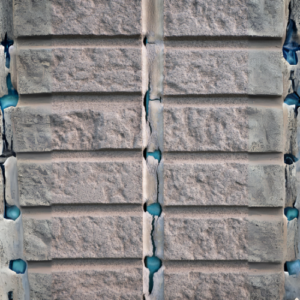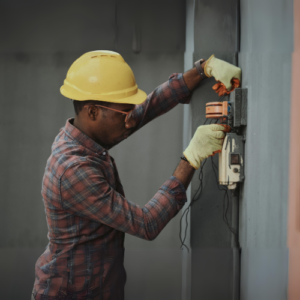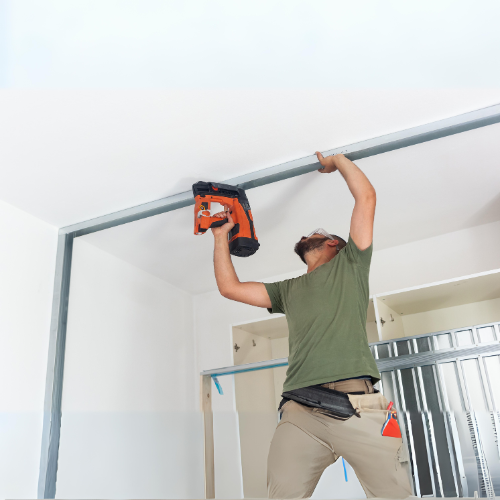Wall Expansion Joint Covers Guide: Installation to Maintenance | Expert Tips
A wall expansion joint cover is highly significant as it protects buildings from the harmful effects of temperature changes, seismic activity, and various environmental factors.
People often have questions about the installation and maintenance of expansion joint covers floor expansion joint covers.
Our blog serves as the ultimate solution, providing guidance on these topics and addressing various related inquiries.
The Installation Process of Wall Expansion Joint Covers
While the installation process of wall expansion joint covers can differ based on the cover type and specific building needs, there are some common steps to follow. Here is an installation guide:
Preparation
Before the installation of expansion joint covers, it is essential to conduct a thorough cleaning and preparation of the surfaces where the covers will be placed. This involves the removal of any debris, dust, or loose materials to guarantee a secure adhesion and proper fit.
Measurement And Cutting
Measure the length of the expansion joint and cut the cover to the appropriate size. It is important to follow the manufacturer’s guidelines and specifications during cutting to ensure precise fit and functionality.
Adhesive Application
Spread the suggested adhesive or sealant evenly on both the back of the expansion joint cover and the intended installation surface. This ensures a robust and even bond between the cover and the surface.
Installation
Gently press the expansion joint cover onto the surface, aligning it with the joint or gap. Apply steady pressure to ensure it adheres properly, removing any air bubbles or gaps. Always follow the manufacturer’s instructions for any extra steps or precautions that might be necessary.
Finishing
Once the expansion joint covers are installed, any excess adhesive or sealant should be carefully removed. The installation area should be cleaned and inspected to ensure proper fit and functionality.
Common Problems with Wall Expansion Joint Covers and How to Address Them
While wall expansion joint covers are designed to provide reliable protection and ensure the structural integrity of a building, they can encounter some common problems over time:
 Cracking Or Splitting
Cracking Or Splitting
In certain situations, expansion joint covers can develop cracks or splits from prolonged exposure to UV radiation, extreme temperatures, or other environmental elements. To rectify this, it’s advisable to replace the damaged covers with new ones crafted from sturdier materials or better tailored to the specific environment.
Discoloration or Fading
Over time, expansion joint covers in flooring may show discolouration from UV radiation. To address this issue, the covers can be cleaned or replaced with new ones that are resistant to discolouration or fading. This ensures a fresh look for your floor expansion joint.
Loose or Detached Covers
Occasionally, expansion joint covers might loosen or detach from the surface due to issues like insufficient adhesive, improper installation, or excessive movement. To resolve this, it’s essential to reinstall or replace the covers, ensuring they adhere properly and fit securely.
Water Infiltration
If water infiltration occurs despite the presence of expansion joint covers, it may indicate a problem with the cover or the installation. To address this issue, the source of the water infiltration should be identified and corrected.
This may involve replacing the cover, improving the sealant application, or addressing any underlying issues with the building envelope.
The Importance of Regular Maintenance for Wall Expansion Joint Covers
Maintaining wall expansion joint covers is crucial for their longevity and performance. It helps catch and fix issues before they can harm the building’s protection and structure. Here are vital maintenance practices for these covers:

Inspection
Regularly inspect the expansion joint covers for any signs of damage, deterioration, or displacement. Look for cracks, splits, discolouration, or any other issues that may indicate a problem. Inspections should be carried out at least once a year or as recommended by the manufacturer.
Cleaning
Clean the expansion joint covers regularly to remove any dirt, debris, or other contaminants that can compromise their performance. Use a mild detergent or cleaning solution and a soft brush or cloth to gently clean the covers. Avoid using harsh chemicals or abrasive materials that can damage the covers.
Sealant Maintenance
Check the condition of the sealant or adhesive used to secure the expansion joint covers. Over time, the sealant may deteriorate or become loose, compromising the performance of the covers. If necessary, reapply or replace the sealant to ensure proper adhesion and functionality.
Repair Or Replacement
If any issues or damage are identified during inspections, address them promptly. Repair or replace damaged covers, reapply sealant or take any necessary steps to ensure the optimal performance of the expansion joint covers.
THE SIGNIFICANCE OF INVESTING IN HIGH-QUALITY WALL EXPANSION JOINT COVERS FOR LONG-TERM BUILDING PROTECTION AND STRUCTURAL INTEGRITY
Investing in high-quality wall expansion joint covers is a wise decision for architects, contractors, and building owners. These durable yet inconspicuous components are an integral part of any building design, contributing to the long-term stability, safety, and protection of the structure. By incorporating wall expansion joint covers into building designs, professionals can ensure the structural integrity and longevity of the buildings they create.

